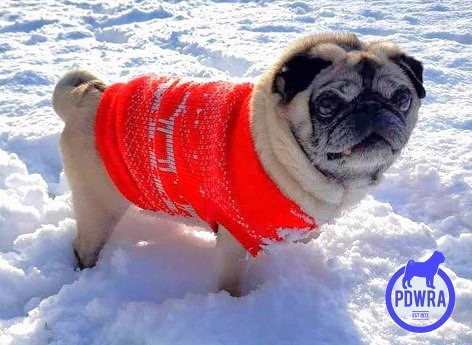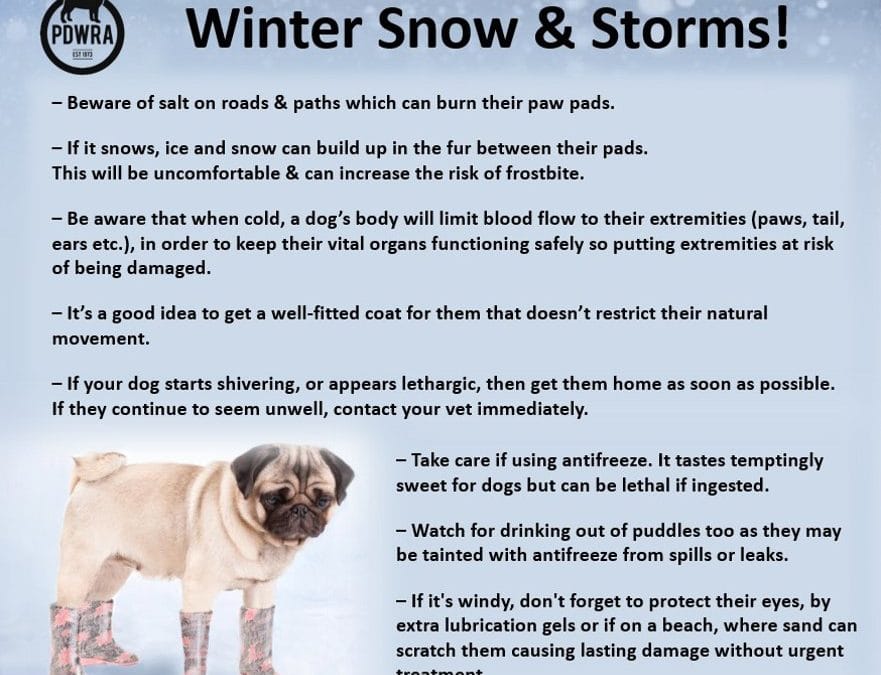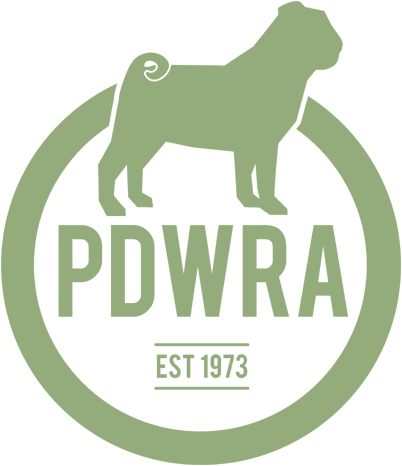The Big Chill is definitely here! ❄️
We’ve been warned by the Met Office that it was coming; temperatures dropping, snow and icy conditions as well as storms and flooding!
Here are our regular tips and advice to help your pug brave the cold, safely, to remain happy during the wet & cold months, ensuring it remains a fun and enjoyable time with your best friend!
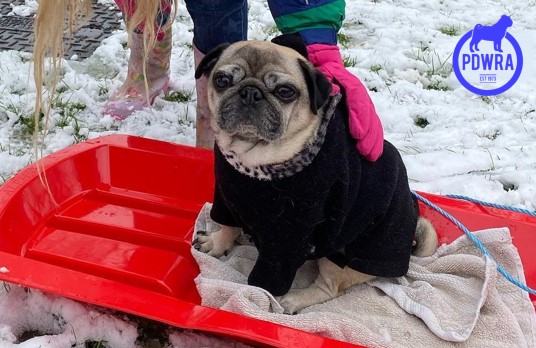
– Beware of salt on roads & paths which can burn their paw pads.
Check once home and rinse them if necessary.
– If it snows, ice and snow can stick to the fur between their pads and build up. This will be uncomfortable for your dog and increases their risk of frostbite.
If they raise their paws, stop walking or whine it could be a sign that their paws are too cold.
– When cold, a dog’s body will limit blood flow to their extremities (paws, tail, ears etc.), in order to keep their vital organs functioning safely. This can put their extremities at risk of being damaged by the cold.
– If you’re spending time outdoors, it’s a good idea to get a coat for them. Ensure it fits well so that it doesn’t prevent them moving normally, either by being too tight or too loose.
– If your dog starts shivering, or appears very tired (lethargic), then get them home as soon as possible. If they continue to seem unwell, contact your vet immediately.
– Take care when using antifreeze. It tastes sweet so is tempting for dogs but can be lethal if ingested.
– Watch for dogs drinking out of puddles too as they may be tainted with antifreeze chemicals from spills or leaks.
– Also, beware of thin ice & frozen puddles.
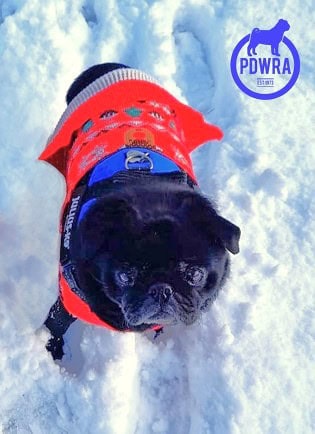
Here are some Body-care tips:
– Additional to well-fitting warm outerwear, use paw protection if needed, this could be in the form of dog dry skin creams/ balms, or doggy booties.
– Inspect pug paws regularly to check for cracked pads, broken nails or snow/salt damage.
– Brush your pug’s coat regularly to distribute natural oils to the skin and prevent dry patches.
– If it’s windy, don’t forget to protect their eyes, by extra lubrication gels and especially if on a beach, where wind & sand can scratch them causing lasting damage without urgent treatment.
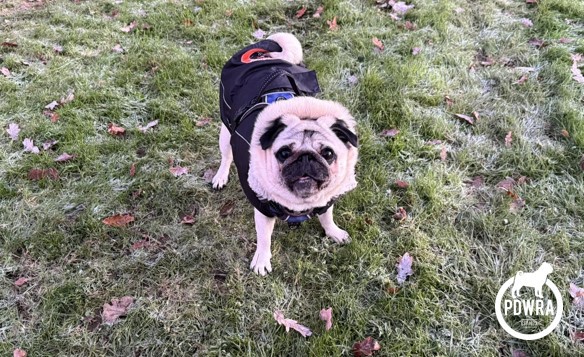
Please check this very useful guide to see if it’s wise to take your pugs out! :
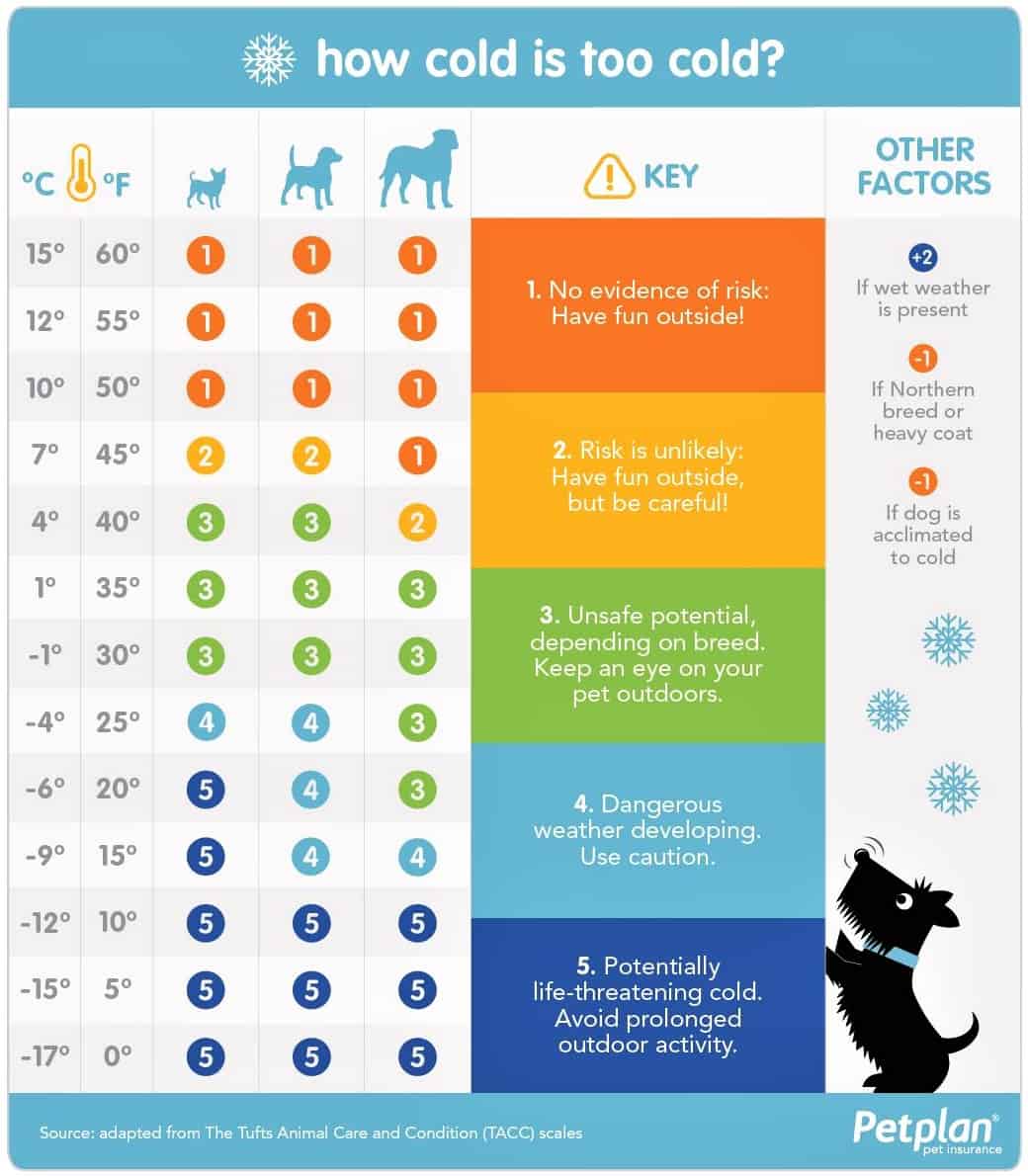
If your pug shows signs of hypothermia, which includes, shivering, drowsiness, confusion, clumsiness, pale gums and loss of consciousness or collapse, get your pet immediately out of the cold & contact your vet straight away.
Dry & warm them up gently, never intensely & too quickly as this can be dangerous.
For further information, please see:
Hypothermia in Pets – PDSA
Also,
Keep your dog safe during winter | The Kennel Club
And for our Seasonal Hazard webpage, please go to:
Seasonal Hazards for Pugs | The Pug Dog Welfare & Rescue Association (pugwelfare-rescue.org.uk)
Have fun while staying safe!
